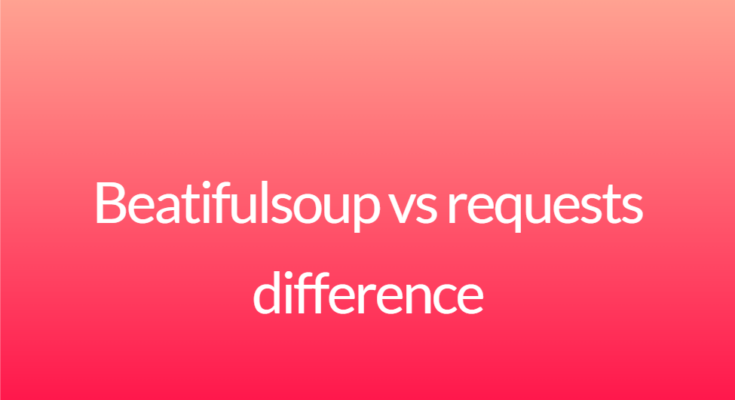| Feature |
Beautiful Soup |
Requests |
| Introduction |
Beautiful Soup is a Python library used for web scraping purposes. It provides easy and efficient methods for parsing HTML and XML documents and extracting data from them. |
Requests is a Python library used for making HTTP requests. It simplifies the process of sending HTTP requests and handling the responses received. |
| Main Purpose |
Beautiful Soup is primarily used for web scraping, extracting data from HTML and XML documents. It focuses on parsing and navigating the document structure to find specific elements. |
Requests is mainly used for making HTTP requests, including GET, POST, PUT, DELETE, and other HTTP methods. It handles the communication with web servers and provides functionalities for handling headers, cookies, and other aspects of HTTP. |
| Document Parsing |
Beautiful Soup parses HTML and XML documents using underlying parsers such as lxml, html5lib, or the built-in parser. It provides a convenient interface to access and manipulate the parsed document. |
Requests does not provide direct support for parsing HTML or XML. It focuses on sending HTTP requests and receiving responses. If parsing is required, Beautiful Soup or other libraries can be used in combination with Requests. |
| HTML Manipulation |
Beautiful Soup provides powerful tools for manipulating HTML documents. It supports searching, modifying, and extracting specific elements based on their tag, class, id, or other attributes. |
Requests does not provide built-in functionality for manipulating HTML. It is mainly used for sending and receiving HTTP requests. To manipulate HTML, Beautiful Soup or other libraries can be used in combination with Requests. |
| Error Handling |
Beautiful Soup gracefully handles errors during parsing and provides helpful error messages. It allows users to handle exceptions and handle different scenarios while parsing. |
Requests handles errors related to HTTP requests, such as connection errors, status code errors, and timeouts. It provides various methods and attributes to handle different types of errors. |
| Authentication |
Beautiful Soup does not provide built-in support for authentication. It focuses on parsing and extracting data from HTML and XML documents. |
Requests provides functionality for handling authentication, including basic authentication, digest authentication, OAuth, and other authentication methods. It simplifies the process of sending authenticated requests. |
| Usage |
Beautiful Soup is commonly used for web scraping projects where data needs to be extracted from HTML or XML documents and processed. |
Requests is commonly used for making HTTP requests, interacting with APIs, and handling web-related tasks that require sending and receiving data over the internet. |
| Dependencies |
Beautiful Soup has dependencies on parsers like lxml or html5lib, which need to be installed separately. |
Requests has minimal dependencies and can be easily installed using pip. |



